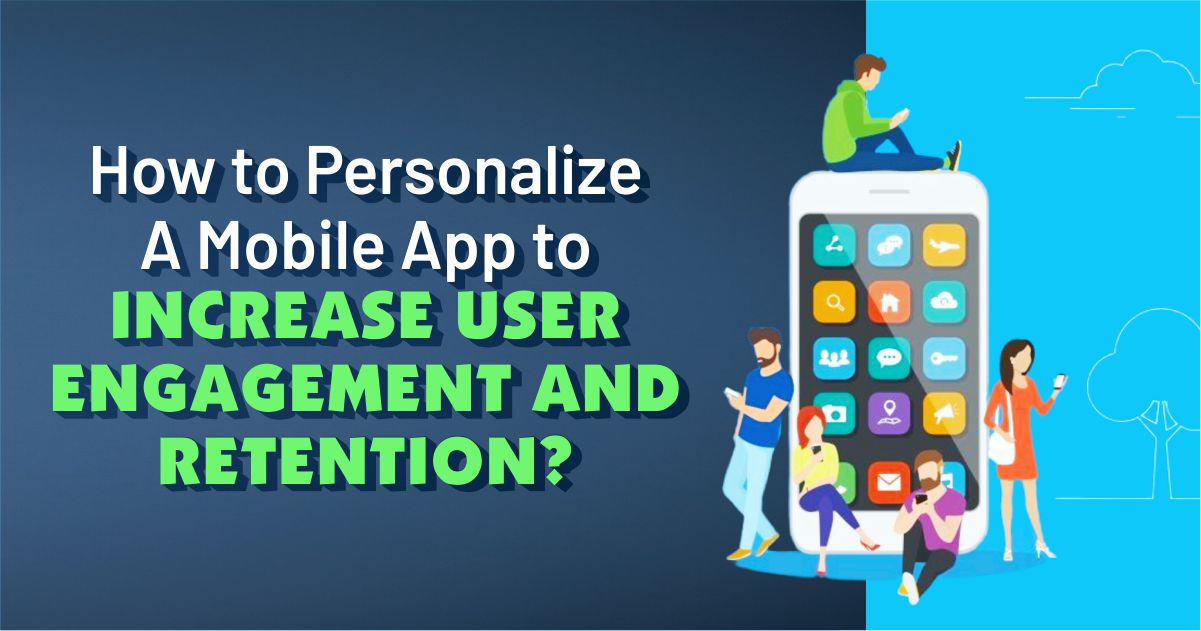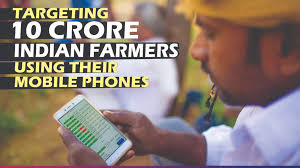Is the number of people using your app decreasing? Are you losing customers on a regular basis? If so, you should personalize a mobile app.
In this article, we’ll go over a few critical steps for mobile app personalization that should be part of your mobile marketing strategy if you want to increase user retention and engagement.
Let’s get started!
Would you use an app that didn’t solve your problem or meet your needs? You’d never do something like that. People are tired of the same old interactions in their apps. This includes irrelevant information and notifications.
So,
Why Do You Need to Personalize Your Mobile App in The First Place?

Personalization of mobile apps is required for one reason: your customers expect it. And it’s something they should have. But not just for their benefit.
With over four million apps available for download from the world’s largest app stores. This fact alone demonstrates how apps have become ingrained in our daily lives. Furthermore, businesses understand that standing out in today’s app sector necessitates a strategic mobile marketing plan.
You’ll understand what we mean if you think like a prospect: the most addictive apps take your activity into account. When combined with personalized information and an overall customized experience, they can produce valuable results.
According to Accenture, 33 percent of customers leave a business due to insufficient or non-existent personalization. If your app is personalized, customers will remain loyal to your brand. A personalized mobile app demonstrates that you understand and care about them. As a result, they are much more likely to purchase and thus increase in-app purchases. Hence, the benefits of mobile app personalization for businesses can’t be ignored.
But how are you going to encompass personalization into your app’s marketing efforts? And, perhaps more importantly, how will you ensure that you are implementing personalization correctly, rather than in a way that makes it appear to be a passing fad?
Let’s have a look.
Steps to Personalize A Mobile App
Step #1: Collect User Data
Before you can tailor your app, you must collect user data. This will help you understand your users better, including who they are, what they want, need, and preferences. After you’ve mastered the subject, you can create a unique experience for them.

Look for patterns and group users who are similar after you’ve gathered all of the relevant information. Segmentation will make the process of app personalization much easier.
Step #2: Use Social Integration
The majority of users dislike the lengthy and complicated registration process. Using social media integration to personalize Mobile apps is the most convenient method. Needless to say, social media marketing will significantly improve the personalization of your mobile app.

As a result, allowing users to log in using their social network accounts is a quick and easy way for people who dislike lengthy registration processes to get into your app. This gives you the customized information you need and speeds up the onboarding process.
Step #3: Personalize a Mobile App Push Notifications
Sending push notifications is one of the best and most effective ways when the question is how to personalize a mobile app. Push notifications are something you’re used to receiving on your smartphone. A push notification is sent directly to you, tailored to your needs, whether a breaking news update, an Amazon delivery, or a special offer from a business.

According to MoEngage, push notifications are highly beneficial to 70 percent of app users. As a result, 53 percent of these users are willing to provide personal information such as their location.
It’s not as if customers are unwilling to interact with the mobile app. The difficulty is in sending them relevant and entertaining push notifications. You can keep things interesting by personalizing push notifications based on user demographics and activity.
Regardless of the type of app you have, you can benefit from sending personalized push notifications.
Step #4: Ask For Reviews
When it comes to one of the most effective steps of mobile app personalization, nothing beats asking for reviews.

But why are mobile app reviews critical?
Apptentive reports that 90% of users read reviews before installing an app. This means that users share their app experience, and 90 percent of users are installing the app.
Create feedback channels within your app to collect user feedback. Getting people’s attention while they’re happy allows you to collect more positive comments in a larger quantity. Gathering feedback and incorporating suggested changes will help you create a more personalized mobile app that inspires loyalty.
Step#5: In-App Messages Personalization is a Must
Users receive in-app messages while using the app. It’s also a good idea to personalize them. Addressing each user by their name is a quick method to personalize in-app messaging. Even though it’s simple, it’s a wonderful touch. You may also send a notification to a user when they reach a goal in your app. You can also send product recommendations based on their preferences, needs, previous purchases, and so on.

Have you noticed that the user hasn’t made any purchases using the app? As an enticement to buy, give them free shipping. Make sure in-app communications are personalized to that unique user, regardless of your selected strategy. That’s a safe bet.
Step #6: Do A/B Testing And Improvise
To ensure that your personalization efforts are paying off, you should test and improve your app using qualitative analytics. In this case, A/B testing is helpful because it displays user intent and preferences on a large, visually meaningful scale.

Assume you’re looking through a picture-based mobile app called X, where you’ve previously searched for a few images. This time, the app does not display anything appealing or interesting. What will you do? Based on your previous search, you’ll most likely switch to the one that displays images.
This example demonstrates the significance of A/B testing. A/B testing will reveal how your app’s users interact with it. As a result, you can quickly determine whether or not your personalization efforts have the desired effect on your target audience.
Conclusion

The majority of people talk about their apps and their features. Personalization is something that very few people discuss, from how they came up with a mobile app for their business to how they promote it.
If you don’t follow the above-mentioned mobile app personalization steps, you’ll end up spinning your wheels and developing and promoting a mobile app that doesn’t generate any traction.
So, what other mobile app personalization steps should businesses and agencies offering mobile app marketing services adhere to? Let us know in the comment below.

















